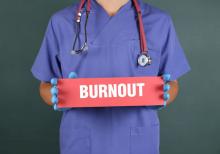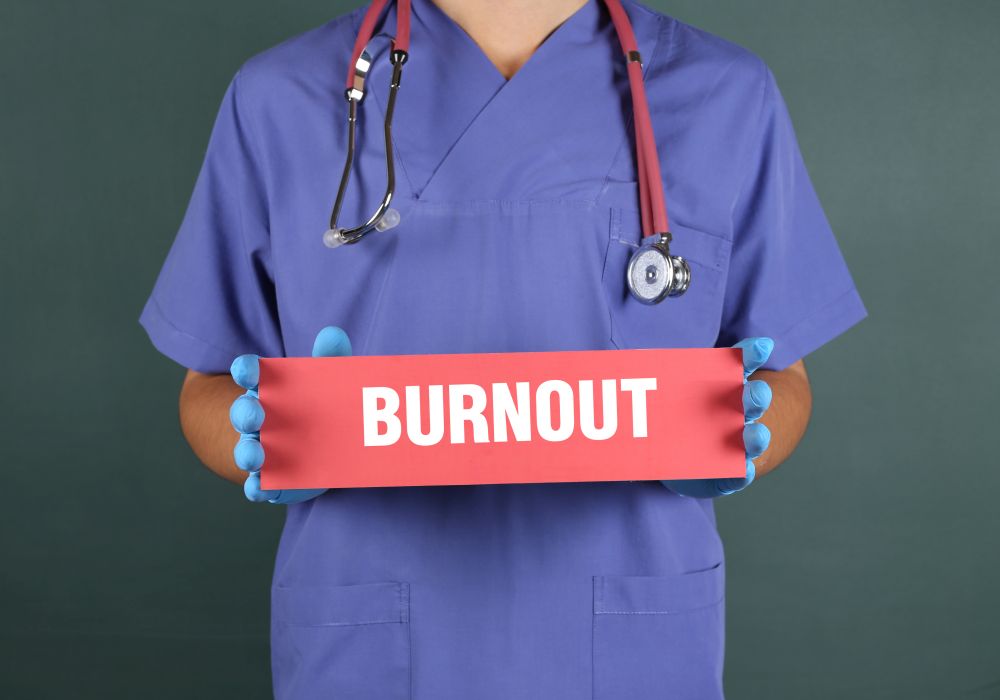User login
The schedule is easier to change than the work itself
Burnout is influenced by a seemingly infinite combination of variables. An optimal schedule alone isn’t the key to preventing it, but maybe a good schedule can reduce your risk you’ll suffer from it.
Smart people who have spent years as hospitalists, working multiple different schedules, have formed a variety of conclusions about which work schedules best reduce the risk of burnout. There’s no meaningful research to settle the question, so everyone will have to reach their own conclusions, as I’ve done here.
Scheduling flexibility: Often overlooked?
Someone who typically works the same number of consecutive day shifts, each of which is the same duration, might suffer from the monotony and inexorable predictability. Schedules that vary the number of consecutive day shifts, the intensity or length of shifts, and the number of consecutive days off might result in lower rates of burnout. This is especially likely to be the case if each provider has some flexibility to control how her schedule varies over time.
Personal time goes on the calendar first
Those who have a regularly repeating work schedule tend to work hard arranging such important things as family vacations on days the schedule dictates. In other words, the first thing that goes on the personal calendar are the weeks of work; they’re “X-ed” out and personal events filled into the remaining days.
That’s fine for many personal activities, but it means the hospitalist might tend to set a pretty high bar for activities that are worth negotiating alterations to the usual schedule. For example, you might want to see U2 but decide to skip their concert in your town since it falls in the middle of your regularly scheduled week of work. Maybe that’s not a big deal (Isn’t U2 overplayed and out of date anyway?), but an accumulation of small sacrifices like this might increase resentment of work.
It’s possible to organize a hospitalist group schedule in which each provider’s personally requested days off, like the U2 concert, go on the work calendar first, and the clinical schedule is built around them. It can get pretty time consuming to manage, but might be a worthwhile investment to reduce burnout risk.
A paradox: Fewer shifts could increase burnout risk
I’m convinced many hospitalists make the mistake of seeking to maximize their number of days off with the idea that it will be good for happiness, career longevity, burnout, etc. While having more days off provides more time for nonwork activities and rest/recovery from work, it usually means the average workday is busier and more stressful to maintain expected levels of productivity. The net effect for some seems to be increased burnout.
Consider someone who has been working 182 hospitalist shifts and generating a total of 2,114 billed encounters annually (both are the most recent national medians available from surveys). This hospitalist successfully negotiates a reduction to 161 annual shifts. This would probably feel good to anyone at first, but keep in mind that it means the average number of daily encounters to maintain median annual productivity would increase 13% (from 11.6 to 13.1 in this example). That is, each day of work just got 13% busier.
I regularly encounter career hospitalists with more than 10 years of experience who say they still appreciate – or even are addicted to – having lots of days off. But the worked days often are so busy they don’t know how long they can keep doing it. It is possible some of them might be happier and less burned out if they work more shifts annually, and the average shift is meaningfully less busy.
The “right” number of shifts depends on a combination of personal and economic factors. Rather than focusing almost exclusively on the number of shifts worked annually, it may be better to think about the total amount of annual work measured in billed encounters, or wRVUs [work relative value units], and how it is titrated out on the calendar.
Other scheduling attributes and burnout
I think it’s really important to ensure the hospitalist group always has the target number of providers working each day. Many groups have experienced staffing deficits for so long that they’ve essentially given up on this goal, and staffing levels vary day to day. This means each provider has uncertainty regarding how often he will be scheduled on days with fewer than the targeted numbers of providers working.
All hospitalist groups should ensure their schedule has day-shift providers work a meaningful series of shifts consecutively to support good patient-provider continuity. I think “continuity is king” and influences efficiency, quality of care, and provider burnout. Of course, there is tension between working many consecutive day shifts and still having a reasonable lifestyle; you’ll have to make up your own mind about the sweet spot between these to competing needs.
Schedule and number of shifts are only part of the burnout picture. The nature of hospitalist work, including EHR frustrations and distressing conversations regarding observation status, etc., probably has more significant influence on burnout and job satisfaction than does the work schedule itself.
But there is still lots of value in thinking carefully about your group’s work schedule and making adjustments where needed. The schedule is a lot easier to change than the nature of the work itself.
Dr. Nelson has had a career in clinical practice as a hospitalist starting in 1988. He is cofounder and past president of SHM, and principal in Nelson Flores Hospital Medicine Consultants. He is codirector for SHM’s practice management courses. Contact him at [email protected].
The schedule is easier to change than the work itself
The schedule is easier to change than the work itself
Burnout is influenced by a seemingly infinite combination of variables. An optimal schedule alone isn’t the key to preventing it, but maybe a good schedule can reduce your risk you’ll suffer from it.
Smart people who have spent years as hospitalists, working multiple different schedules, have formed a variety of conclusions about which work schedules best reduce the risk of burnout. There’s no meaningful research to settle the question, so everyone will have to reach their own conclusions, as I’ve done here.
Scheduling flexibility: Often overlooked?
Someone who typically works the same number of consecutive day shifts, each of which is the same duration, might suffer from the monotony and inexorable predictability. Schedules that vary the number of consecutive day shifts, the intensity or length of shifts, and the number of consecutive days off might result in lower rates of burnout. This is especially likely to be the case if each provider has some flexibility to control how her schedule varies over time.
Personal time goes on the calendar first
Those who have a regularly repeating work schedule tend to work hard arranging such important things as family vacations on days the schedule dictates. In other words, the first thing that goes on the personal calendar are the weeks of work; they’re “X-ed” out and personal events filled into the remaining days.
That’s fine for many personal activities, but it means the hospitalist might tend to set a pretty high bar for activities that are worth negotiating alterations to the usual schedule. For example, you might want to see U2 but decide to skip their concert in your town since it falls in the middle of your regularly scheduled week of work. Maybe that’s not a big deal (Isn’t U2 overplayed and out of date anyway?), but an accumulation of small sacrifices like this might increase resentment of work.
It’s possible to organize a hospitalist group schedule in which each provider’s personally requested days off, like the U2 concert, go on the work calendar first, and the clinical schedule is built around them. It can get pretty time consuming to manage, but might be a worthwhile investment to reduce burnout risk.
A paradox: Fewer shifts could increase burnout risk
I’m convinced many hospitalists make the mistake of seeking to maximize their number of days off with the idea that it will be good for happiness, career longevity, burnout, etc. While having more days off provides more time for nonwork activities and rest/recovery from work, it usually means the average workday is busier and more stressful to maintain expected levels of productivity. The net effect for some seems to be increased burnout.
Consider someone who has been working 182 hospitalist shifts and generating a total of 2,114 billed encounters annually (both are the most recent national medians available from surveys). This hospitalist successfully negotiates a reduction to 161 annual shifts. This would probably feel good to anyone at first, but keep in mind that it means the average number of daily encounters to maintain median annual productivity would increase 13% (from 11.6 to 13.1 in this example). That is, each day of work just got 13% busier.
I regularly encounter career hospitalists with more than 10 years of experience who say they still appreciate – or even are addicted to – having lots of days off. But the worked days often are so busy they don’t know how long they can keep doing it. It is possible some of them might be happier and less burned out if they work more shifts annually, and the average shift is meaningfully less busy.
The “right” number of shifts depends on a combination of personal and economic factors. Rather than focusing almost exclusively on the number of shifts worked annually, it may be better to think about the total amount of annual work measured in billed encounters, or wRVUs [work relative value units], and how it is titrated out on the calendar.
Other scheduling attributes and burnout
I think it’s really important to ensure the hospitalist group always has the target number of providers working each day. Many groups have experienced staffing deficits for so long that they’ve essentially given up on this goal, and staffing levels vary day to day. This means each provider has uncertainty regarding how often he will be scheduled on days with fewer than the targeted numbers of providers working.
All hospitalist groups should ensure their schedule has day-shift providers work a meaningful series of shifts consecutively to support good patient-provider continuity. I think “continuity is king” and influences efficiency, quality of care, and provider burnout. Of course, there is tension between working many consecutive day shifts and still having a reasonable lifestyle; you’ll have to make up your own mind about the sweet spot between these to competing needs.
Schedule and number of shifts are only part of the burnout picture. The nature of hospitalist work, including EHR frustrations and distressing conversations regarding observation status, etc., probably has more significant influence on burnout and job satisfaction than does the work schedule itself.
But there is still lots of value in thinking carefully about your group’s work schedule and making adjustments where needed. The schedule is a lot easier to change than the nature of the work itself.
Dr. Nelson has had a career in clinical practice as a hospitalist starting in 1988. He is cofounder and past president of SHM, and principal in Nelson Flores Hospital Medicine Consultants. He is codirector for SHM’s practice management courses. Contact him at [email protected].
Burnout is influenced by a seemingly infinite combination of variables. An optimal schedule alone isn’t the key to preventing it, but maybe a good schedule can reduce your risk you’ll suffer from it.
Smart people who have spent years as hospitalists, working multiple different schedules, have formed a variety of conclusions about which work schedules best reduce the risk of burnout. There’s no meaningful research to settle the question, so everyone will have to reach their own conclusions, as I’ve done here.
Scheduling flexibility: Often overlooked?
Someone who typically works the same number of consecutive day shifts, each of which is the same duration, might suffer from the monotony and inexorable predictability. Schedules that vary the number of consecutive day shifts, the intensity or length of shifts, and the number of consecutive days off might result in lower rates of burnout. This is especially likely to be the case if each provider has some flexibility to control how her schedule varies over time.
Personal time goes on the calendar first
Those who have a regularly repeating work schedule tend to work hard arranging such important things as family vacations on days the schedule dictates. In other words, the first thing that goes on the personal calendar are the weeks of work; they’re “X-ed” out and personal events filled into the remaining days.
That’s fine for many personal activities, but it means the hospitalist might tend to set a pretty high bar for activities that are worth negotiating alterations to the usual schedule. For example, you might want to see U2 but decide to skip their concert in your town since it falls in the middle of your regularly scheduled week of work. Maybe that’s not a big deal (Isn’t U2 overplayed and out of date anyway?), but an accumulation of small sacrifices like this might increase resentment of work.
It’s possible to organize a hospitalist group schedule in which each provider’s personally requested days off, like the U2 concert, go on the work calendar first, and the clinical schedule is built around them. It can get pretty time consuming to manage, but might be a worthwhile investment to reduce burnout risk.
A paradox: Fewer shifts could increase burnout risk
I’m convinced many hospitalists make the mistake of seeking to maximize their number of days off with the idea that it will be good for happiness, career longevity, burnout, etc. While having more days off provides more time for nonwork activities and rest/recovery from work, it usually means the average workday is busier and more stressful to maintain expected levels of productivity. The net effect for some seems to be increased burnout.
Consider someone who has been working 182 hospitalist shifts and generating a total of 2,114 billed encounters annually (both are the most recent national medians available from surveys). This hospitalist successfully negotiates a reduction to 161 annual shifts. This would probably feel good to anyone at first, but keep in mind that it means the average number of daily encounters to maintain median annual productivity would increase 13% (from 11.6 to 13.1 in this example). That is, each day of work just got 13% busier.
I regularly encounter career hospitalists with more than 10 years of experience who say they still appreciate – or even are addicted to – having lots of days off. But the worked days often are so busy they don’t know how long they can keep doing it. It is possible some of them might be happier and less burned out if they work more shifts annually, and the average shift is meaningfully less busy.
The “right” number of shifts depends on a combination of personal and economic factors. Rather than focusing almost exclusively on the number of shifts worked annually, it may be better to think about the total amount of annual work measured in billed encounters, or wRVUs [work relative value units], and how it is titrated out on the calendar.
Other scheduling attributes and burnout
I think it’s really important to ensure the hospitalist group always has the target number of providers working each day. Many groups have experienced staffing deficits for so long that they’ve essentially given up on this goal, and staffing levels vary day to day. This means each provider has uncertainty regarding how often he will be scheduled on days with fewer than the targeted numbers of providers working.
All hospitalist groups should ensure their schedule has day-shift providers work a meaningful series of shifts consecutively to support good patient-provider continuity. I think “continuity is king” and influences efficiency, quality of care, and provider burnout. Of course, there is tension between working many consecutive day shifts and still having a reasonable lifestyle; you’ll have to make up your own mind about the sweet spot between these to competing needs.
Schedule and number of shifts are only part of the burnout picture. The nature of hospitalist work, including EHR frustrations and distressing conversations regarding observation status, etc., probably has more significant influence on burnout and job satisfaction than does the work schedule itself.
But there is still lots of value in thinking carefully about your group’s work schedule and making adjustments where needed. The schedule is a lot easier to change than the nature of the work itself.
Dr. Nelson has had a career in clinical practice as a hospitalist starting in 1988. He is cofounder and past president of SHM, and principal in Nelson Flores Hospital Medicine Consultants. He is codirector for SHM’s practice management courses. Contact him at [email protected].


